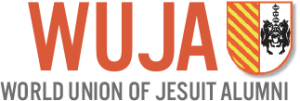WUJA’S HISTORY
Creation
The World Union of Jesuit Alumni (ae) – sometimes known in short as ASIA (“ Antiqui societatis Jesu Alumni”) – was established on 31 July 1956 in Bilbao (Spain) during a congress held on the occasion of the fourth centenary of the death of Saint Ignatius. This congress adopted a statement, known as the “Magna Carta of Loyola”, setting out a number of general objectives, insisting above all that the Alumni actions should be strictly linked with those of the Society of Jesus. At that time, the Union was known as “the international movement of Alumni”. It had no statutes and no formal organisation. It laid on the personal commitment of three strong personalities : Enzo SALA and Pietro ADDONINO from Italy, and Théo LOMBARD from France.
The Rome congress ( July 1967)
Chaired by Pietro Addonino, then president of the European confederation, it adopted formal statutes, although these were not legally registered. It elected President Antonio URIBE PORTOCARRERO (Colombia) and confirmed Enzo Sala as General Secretary . Later on, the general secretariat was placed at Milan, under the supervision of Fr Roberto ZÜLLIG then of Franz ZELLINGER, both Italian.Then came a long period of stagnation during which little happened, with the exception of a gathering in Drongen (Belgium) in 1979 that adopted a declaration on the spirit and the aims of of the World Union which was considered an updating of the Magna Carta of 1956.
The Versailles congress (July 1986)
The Versailles Congress was prepared whilst the WU had no real organisation (the President Portocarrero had resigned and had not been replaced; there was no effective general secretariat). In fact, almost everything laid on the initiative and the work of Pierre BALAZUC, president of the European confederation, and of the leading team of the French federation. The theme of the congress was labelled : “To make commitment – yes – To which values?”. It gathered 750 participants, 200 of which took part in a 4 days walking pilgrimage to Chartres. A great achievement was the meeting of the WU representatives, gathered at the initiative of Théo Lombard. It revised the statutes, mainly in order to provide a solution in case of disability of the President. It elected José GAMAZO MANGLANO (Spain) President and Ciro CACCHIONE (Italy) General Secretary,T. Lombard being made honorary President. A very innovative move was to decide on the creation of a charitable organization, the Arrupe association, designed to help the Society of Jesus’ humanitarian actions (in education, health and urgency aid, in particular for the refugees) throughout the world; the working out of its statutes was the last work of P. Balazuc.
The Congress of Bilbao-Loyola (July 1991)
Under the guidance of Fr DUMINUCO (Jesuit counsellor to the Union), it decided to revise the statutes in order, mainly, to separate the task of President and that of organising the Congress and to set up a fixed rotation among continents for the hosting of the Congress. John BOWIE (Australia) was elected President , C. Cacchione being reelected General Secretary.
The Congress of Sydney (July1997)
It adopted the statutory modifications decided in principle in Bilbao. Fabio TOBON (Colombia) was elected President and François– Xavier CAMENEN (Luxembourg) Secretary. The Council elected by the Congress met in Rome in January 2001, for the first time ever outside a congress. It decided (28 January) to revitalize the World Union by adopting completely revised statutes and registering them legally. This registration, making the WU for the first time a legal entity, was achieved on 2 March 2001 under Luxembourg law. On April 2002, the Council adopted a “regulation” for implementing the new statutes.
The Congress of Calcutta (Kolkata) (January 2003)
Bernard THOMPSON (United Kingdom) was elected President, F–X Camenen being reelected Secretary. The newly elected Council met in July 2005 in Lisbon on the occasion of the European congress, and again in November 2006 in Miami, Florida, and in Nairobi (Kenya) in September 2007.
The Congress of Bujumbura, Burundi (July 2009)
It worked on the theme “Jesuit Alumni, for a better Africa, what have we done ? What are we doing ? What must we do ?”. This work resulted in a number of practical resolutions, in particular one asking the alumni of the Great Lakes area (Democratic Republic of Congo, Rwanda and Burundi) to start among themselves a process of truth and reconciliation and another one asking for the establishment of a jesuit higher education institution in the same area . Tom BAUSCH (United States) was elected President of the Union, F-X Camenen was re-elected Secretary. Medellin (Colombia) was chosen as the place of the next congress in 2013. The newly-elected Council met at the end of the congress. It met again in Antwerp (Belgium) in March 2010, in Patna (India) in February 2011 on the occasion of the congress of the Indian federation, in Medellin in February 2012 in order to prepare the 2013 world Congress and in Brussels (Belgium) in September 2012.
Appendix : list of Jesuit counsellors to the World Union
Before 1971: Fr Paolo DEZZA
1971-1981: Fr John BLEWETT
1981-1987: Fr James SAUVE
1987-2004: Fr Vincent DUMINUCO
2004-2010: Fr Pierre SALEMBIER
2010-2014: Fr William CURRIE
2014-2017: Fr Jose MORALES OROZCO
Since 2017: Fr William MULLER
List of presidents of WUJA
Enzo Sala (Italy), Pietro Addonino (Italy) and Théo Lombard (France): 1956-1967
Antonio Uribe Portocarrero (Colombia): 1967-…
Jose Gamazo Manglano (Spain): 1986-1991
John Bowie (Australia): 1991-1997
Fabio Tobon (Colombia): 1997-2003
Bernard Thompson (UK): 2003-2009
Tom Bausch (USA): 2009-2013
Alain Deneef (Belgium): 2013-2022
Francisco Guarner (Spain): 2022-…
JOIN THE WUJA COMMUNITY!

